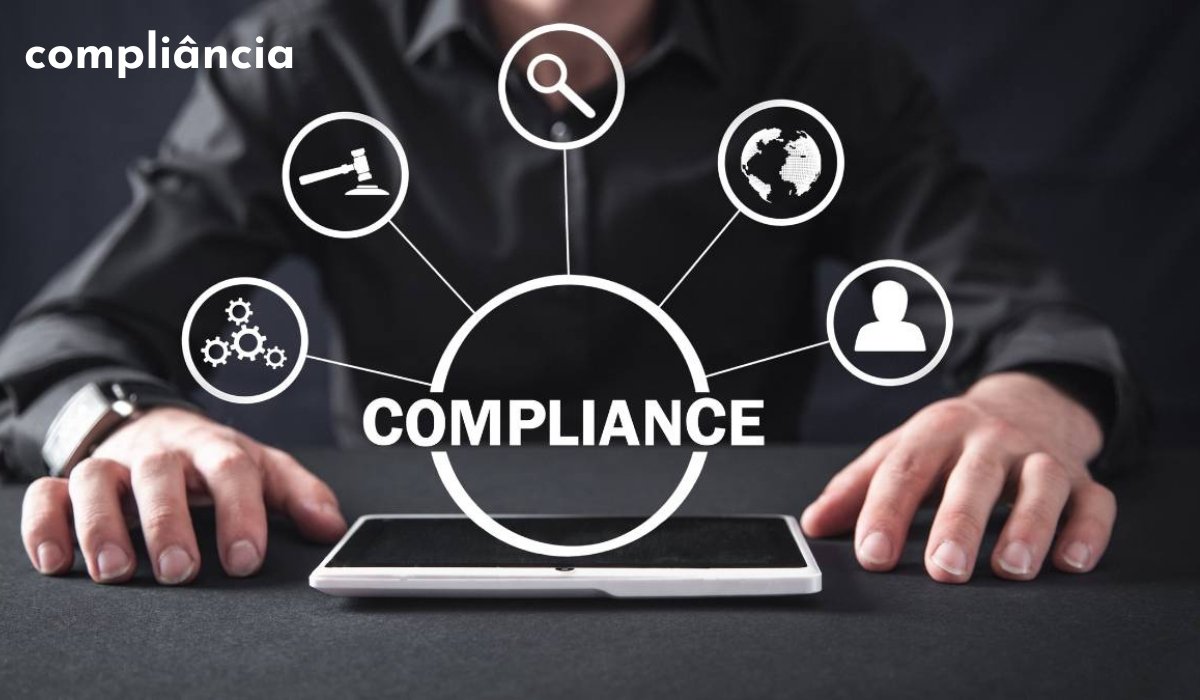In the fast-paced world of business, staying compliant isn’t just a legal obligation—it’s a strategic advantage. Whether you’re a seasoned business owner or a compliance officer, understanding compliância (compliance in Portuguese) is essential for navigating today’s complex regulatory landscape.
What is Compliância?
Compliância goes beyond ticking boxes on a checklist. It’s about embedding a culture of ethical behavior within your organization. At its core, compliância involves managing organizational risk and adhering to legal and regulatory frameworks, ensuring that every action your business takes aligns with laws and ethical standards.
The Importance of Compliância in Today’s Business Environment
In an age where businesses face increasing scrutiny from regulators and the public, compliância has never been more critical. It’s not just about avoiding fines; it’s about building trust and credibility with customers, partners, and investors. Companies that prioritize compliância are better equipped to handle crises, make ethical decisions, and maintain a positive reputation.
Understanding Compliância
What is Compliância Beyond Mere Compliance?
Compliância isn’t just about following laws. It’s about establishing a culture where ethical behavior is the norm. This involves setting up policies that encourage employees to act with integrity and providing them with the tools and training they need to understand their responsibilities.
Creating a Culture of Ethical Behavior
Creating a culture of ethical behavior starts at the top. Leaders must model ethical behavior and communicate its importance. Regular training and open lines of communication encourage employees to report unethical behavior without fear of retaliation.
Managing Organizational Risk
By identifying and mitigating potential risks, you can protect your business from financial loss and reputational damage. This involves conducting regular risk assessments and staying up-to-date with changes in laws and regulations.
Adhering to Legal and Regulatory Frameworks
Adhering to legal and regulatory frameworks is non-negotiable. Non-compliance can result in hefty fines and damage to your reputation. Staying compliant involves continuously monitoring regulatory changes and adjusting your policies accordingly.
Key Areas of Compliância
Financial Regulations
Financial regulations are designed to ensure the integrity of financial markets and protect investors. Complying with these regulations involves accurate financial reporting and fraud prevention measures.
Fraud Prevention
Fraud prevention is a crucial aspect of compliância. This involves implementing internal controls and regularly auditing financial statements to detect and prevent fraudulent activities.
Accurate Financial Reporting
Accurate financial reporting builds trust with stakeholders. It involves providing truthful and transparent financial information, ensuring that all financial records are complete and free from errors.
Data Privacy
In an era of digital transformation, protecting sensitive information is paramount. Compliância in data privacy involves adhering to data protection laws and implementing robust security measures to safeguard personal information.
Protecting Sensitive Information
Protecting sensitive information requires a multi-layered approach. This includes encrypting data, implementing access controls, and regularly monitoring for security breaches.
Adhering to Data Protection Laws
Data protection laws vary by region, but they all aim to protect individuals’ privacy rights. Businesses must understand and comply with these laws to avoid legal penalties and maintain customer trust.
Environmental Regulations
Environmental regulations are designed to protect the environment and promote sustainability. Compliância in this area involves minimizing your business’s environmental impact and adhering to environmental laws and standards.
Minimizing Environmental Impact
Businesses can minimize their environmental impact by adopting sustainable practices, such as reducing waste, conserving energy, and using eco-friendly materials.
Compliance with Environmental Laws
Staying compliant with environmental laws involves understanding the regulations that apply to your business and implementing practices that meet or exceed these standards.
Anti-corruption Measures
Anti-corruption measures are essential for maintaining ethical business practices. This involves preventing bribery and corruption through clear policies and regular training.
Preventing Bribery and Corruption
Preventing bribery and corruption starts with a zero-tolerance policy. Employees must be trained to recognize and report unethical behavior, and companies should conduct regular audits to detect any misconduct.
Maintaining Ethical Business Practices
Maintaining ethical business practices involves creating a code of conduct that outlines expected behaviors and the consequences of non-compliance. This code should be communicated to all employees and enforced consistently.
Workplace Safety
Ensuring workplace safety is a fundamental aspect of compliância. This involves adhering to safety regulations and creating a safe work environment for all employees.
Ensuring Employee Safety
Ensuring employee safety involves conducting regular safety audits, providing safety training, and implementing measures to prevent workplace accidents.
Adhering to Safety Regulations
Adhering to safety regulations is crucial for protecting employees and avoiding legal penalties. Businesses must stay informed about the latest safety standards and ensure that their practices comply with these regulations.
Benefits of Compliância
Reduced Legal Risks
By staying compliant with laws and regulations, businesses can avoid fines, penalties, and lawsuits. This not only protects the company’s finances but also its reputation.
Avoiding Fines and Penalties
Avoiding fines and penalties involves proactive compliance management. Regular audits and compliance checks help identify and address potential issues before they escalate.
Protecting Against Lawsuits
Protecting against lawsuits involves implementing policies that prevent violations of laws and regulations. This includes thorough documentation and training to ensure all employees understand their compliance responsibilities.
Enhanced Reputation
A strong compliance program enhances your reputation by building trust with customers, partners, and investors. It demonstrates your commitment to ethical behavior and responsible business practices.
Building Trust with Customers, Partners, and Investors
Building trust involves transparency and honesty in all business dealings. By adhering to compliance standards, businesses can foster positive relationships with stakeholders.
Improved Decision-Making
Compliância supports improved decision-making by providing a framework for ethical and responsible choices. This helps businesses avoid risky behaviors and make decisions that align with their values.
Ethical and Responsible Choices
Ethical and responsible choices are guided by a strong compliance program. This involves setting clear ethical standards and ensuring all employees understand and adhere to them.
Stronger Risk Management
Stronger risk management is achieved through regular risk assessments and proactive measures to mitigate potential risks. This helps businesses stay ahead of potential issues and protect their assets.
Identifying and Mitigating Potential Risks
Identifying and mitigating potential risks involves continuous monitoring and assessment of compliance activities. This helps businesses address issues before they become major problems.
Increased Operational Efficiency
Increased operational efficiency is a key benefit of compliância. By streamlining processes and clarifying roles and responsibilities, businesses can operate more smoothly and effectively.
Streamlined Processes
Streamlined processes involve simplifying and optimizing workflows to eliminate inefficiencies. This helps businesses save time and resources while maintaining compliance.
Clear Roles and Responsibilities
Clear roles and responsibilities ensure that all employees understand their compliance obligations. This reduces confusion and helps maintain a consistent approach to compliance across the organization.
Implementing a Compliância Program
Assessing Vulnerabilities
Assessing vulnerabilities involves identifying potential compliance gaps and conducting risk assessments. This helps businesses understand where they need to improve their compliance efforts.
Identifying Potential Compliance Gaps
Identifying potential compliance gaps involves reviewing current policies and practices to ensure they meet regulatory standards. This helps businesses address any areas of non-compliance.
Conducting Risk Assessments
Conducting risk assessments involves evaluating potential risks and their impact on the business. This helps businesses prioritize their compliance efforts and allocate resources effectively.
Developing Policies and Procedures
Developing policies and procedures involves creating clear guidelines for compliance. This ensures that all employees understand their responsibilities and know how to comply with regulations.
Creating Clear Guidelines
Creating clear guidelines involves outlining specific compliance requirements and procedures. This helps employees understand what is expected of them and how to comply with regulations.
Ensuring Accessibility
Ensuring accessibility involves making compliance policies and procedures easily accessible to all employees. This helps ensure that everyone understands their compliance obligations.
Providing Training
Providing training involves educating employees on compliance requirements and ensuring they have the knowledge and skills to comply with regulations.
Educating Employees on Compliance Requirements
Educating employees on compliance requirements involves providing regular training and resources to help them understand their responsibilities. This helps ensure that everyone is aware of and adheres to compliance standards.
Continuous Training and Updates
Continuous training and updates involve regularly refreshing employees’ knowledge and providing updates on changes to regulations. This helps ensure that everyone stays informed and compliant.
Monitoring and Auditing
Monitoring and auditing involve regularly checking compliance adherence and identifying and addressing any issues.
Ensuring Compliance Adherence
Ensuring compliance adherence involves conducting regular audits and monitoring compliance activities. This helps businesses identify and address any areas of non-compliance.
Identifying and Addressing Issues
Identifying and addressing issues involves promptly addressing any compliance violations and taking corrective action to prevent future issues.
Enforcing Through Discipline
Enforcing through discipline involves establishing disciplinary procedures and reinforcing the importance of compliance.
Establishing Disciplinary Procedures
Establishing disciplinary procedures involves setting clear consequences for non-compliance. This helps reinforce the importance of compliance and encourages employees to adhere to regulations.
Reinforcing Compliance Importance
Reinforcing compliance importance involves regularly communicating the value of compliance and recognizing employees who demonstrate ethical behavior.
Challenges and Future of Compliância
Complex Regulatory Landscape
The complex regulatory landscape presents challenges for businesses trying to stay compliant. Holding up with changing regulations requires continuous effort and resources.
Keeping Up with Changing Regulations
Keeping up with changing regulations involves staying informed about new laws and updating compliance policies and procedures accordingly. This helps businesses stay compliant and avoid legal penalties.
Resource Constraints
Resource constraints can make it challenging for small and medium-sized businesses to implement and maintain effective compliance programs.
Challenges for Small and Medium-Sized Businesses
Challenges for small and medium-sized businesses include limited resources and expertise to manage compliance. These businesses may need to seek external support to ensure they meet regulatory requirements.
Leveraging Technology
Leveraging technology can help businesses manage compliance more effectively. Automation and efficiency tools can streamline compliance processes and reduce the burden on employees.
Using Technology to Manage Compliance
Using technology to manage compliance involves implementing software and tools that automate compliance tasks and provide real-time monitoring and reporting.
Automation and Efficiency
Automation and efficiency tools can help businesses streamline compliance processes, reduce manual effort, and improve accuracy.
Emerging Trends
Emerging trends in compliância include data privacy, cybersecurity, and environmental sustainability. Businesses must adapt to these trends to stay compliant and competitive.
Data Privacy, Cybersecurity, and Environmental Sustainability
Data privacy, cybersecurity, and environmental sustainability are becoming increasingly important in the compliance landscape. Businesses must implement policies and practices to address these areas.
Adapting to Future Challenges
Adapting to future challenges involves staying informed about emerging trends and continuously updating compliance programs to address new regulations and risks.
Conclusion
Compliância is essential for businesses to operate ethically and responsibly in today’s complex regulatory landscape. By implementing a strong compliance program, businesses can reduce legal risks, enhance their reputation, improve decision-making, and increase operational efficiency. Prioritizing compliância is not just about avoiding fines; it’s about building a sustainable and successful business. Take the necessary steps to ensure your business stays compliant and thrives in the long run.
You may also like: Mastering QXEFV for Small Business Success
FAQs
Compliance in business refers to adhering to laws, regulations, and internal policies to ensure ethical operations and avoid legal penalties.
Compliance is crucial for protecting a business from legal risks, enhancing its reputation, and ensuring ethical decision-making.
Common challenges include keeping up with changing regulations, limited resources, and navigating a complex regulatory landscape.
Businesses can use software and automation tools to streamline compliance processes, improve monitoring, and reduce manual efforts.
Emerging trends include data privacy, cybersecurity, and environmental sustainability, which require businesses to adapt their compliance strategies.










